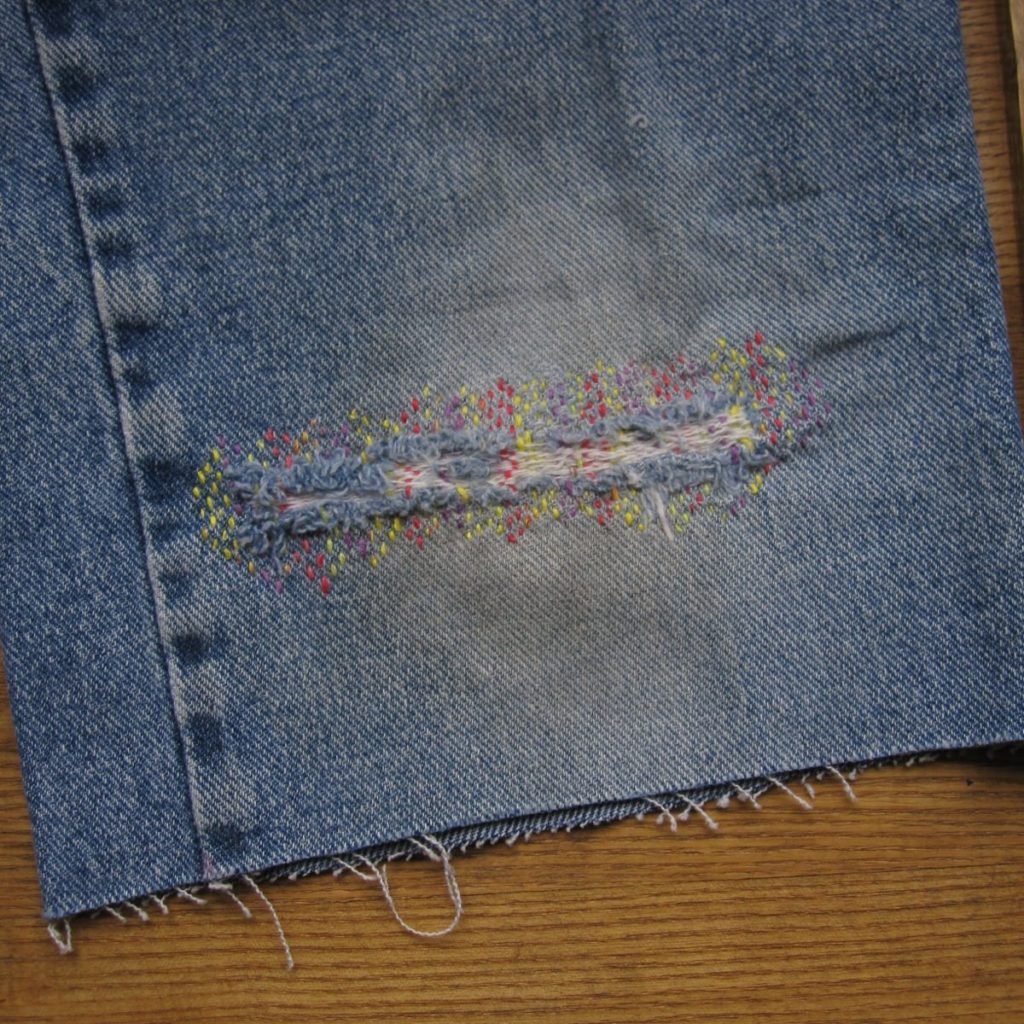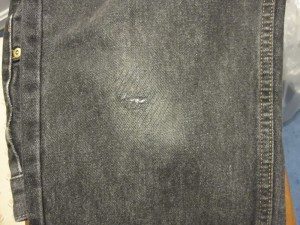Today was Day 14 of a 15×15 challenge: downsize and organize in the sewing room 15 minutes per day for 15 days. It was born of realizing the morning of the 17th that, counting that day, there were exactly 15 days of January left, and it’s been incredible. Surfaces don’t have piles on them! Getting to the back of the closet doesn’t require moving things! There is even open space on more than one shelf! Right now there are large bags of trash, recycling, and donations taking up space in the room, but tomorrow’s 15 minutes will culminate with their ceremonious removal.
Today I sorted through some hanging shelves in the closet. One stack included a lot of cut and torn denim. When I learned how to darn, I was infatuated with the idea of it. Hand-darning has lost its luster, but for a while (also influenced by the denim repurposing adventures and the book Mend it Better) I had the idea to make a denim mending sampler, and maybe even a denim bag or basket that would feature a variety of mends in the same few bright colors. I believe the following darned tear was destined for the latter project.
It’s mended with all six strands of some bright variegated embroidery floss.
That project is not sticking around; there will always be higher-priority sewing and embroidery. However, I wanted to show it off, because it is quite pretty I think, and it also made me think of this picture:
This is a poor picture of the knee of a pair of my husband’s jeans, posted on my personal blog some 14 months ago but never seen here. I machine-darned this tear by following the grain of the denim, stitching in the ravines except for quick stitches over the wales to get from ravine to ravine. It is perhaps the most invisible mend I’ve ever done (the photo actually makes it more apparent, which is useful for teaching I suppose), and I have an idea to improve it. Here’s the ideal process, where step 2 is the one I failed to do in this mend:
1. Fuse a piece of iron-on tricot to the inside of the knee, large enough to extend into good fabric in all directions (typically a tear happens because the fabric is weak in that area).
2. Secure the white threads by stitching around the interior of the tear in a flattened oval.
3. With a shortened stitch, sew along the grain of the denim about every 3rd ravine, moving between ravines by stitching perpendicular to the grain, and covering the whole weak area, extending the stitching into the good fabric. This secures the tricot and spreads the stress out.
4. Over just the torn part and immediate vicinity, sew as in step 3 but in every ravine (or at least the ones you didn’t stitch in before). This helps prevent fraying and covers a bit more of the white threads.
I don’t anticipate much hand-mending of denim in my future. This mend lasted the remaining life of the jeans and took a quarter of the time hand-darning would have.

